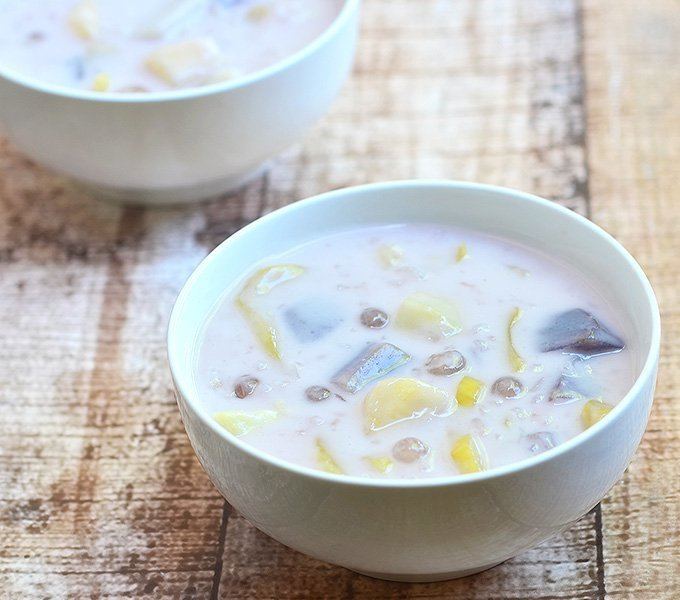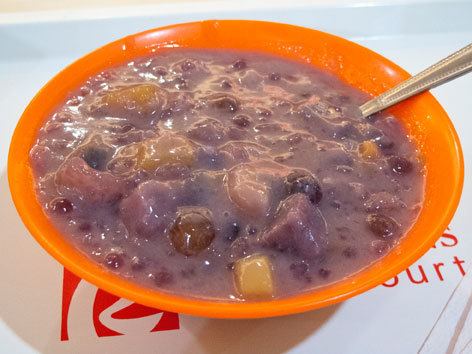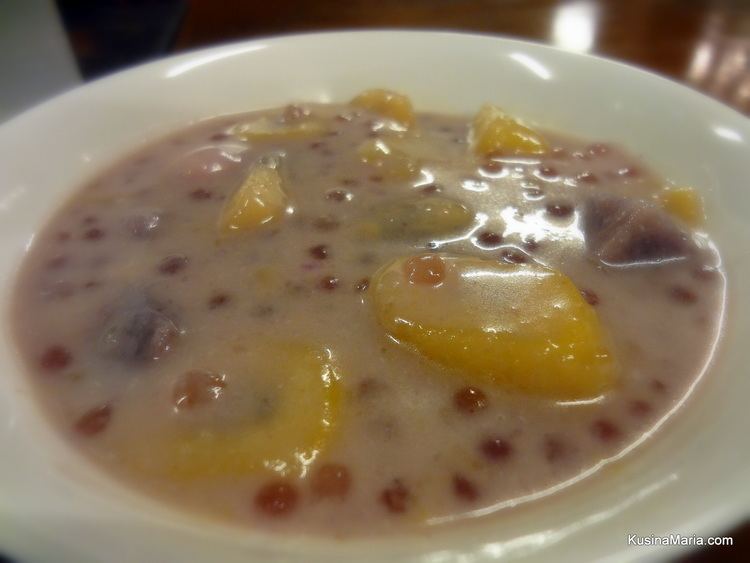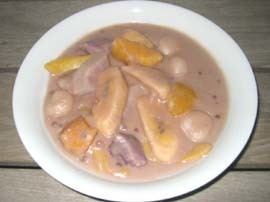Serving temperature Hot or cold | Variations Bilo-bilo | |
 | ||
Alternative names giná-tan, tinunuan, alpahor, ginettaán, ginat-an, ginat-ang lugaw, pinindot, ginataang bilo-bilo, ginataang halo-halo Main ingredients Coconut milk, Banana, Taro, Sweet potato, Sago Similar Banana, Coconut milk, Landang, Sweet potato, Bilo‑bilo | ||
Cebuano binignit recipe
Binignit is a Visayan dessert soup from the central Philippines. The dish is traditionally made by Visayans with slices of sabá bananas, taro, and sweet potato.
Contents

The meat of a mature coconut is grated and the "thick" milk is extracted. Two cups of water are added to the grated coconut and a second extraction is made. This becomes the "thin" milk. This "thin" coconut milk extract is added to cubed kamote (sweet potato), gabi (taro) and ube (purple yam), sliced ripe sabá (plantain) and langka (jack fruit), and tapioca pearls. Sometimes, young coconut meat strips are also added. The mixture is brought to a boil; being stirred occasionally until done. Just before removal from the flame, the "thick" coconut milk is added.

The people of the neighbouring island of Leyte usually include landang (palm flour jelly balls), jackfruit, and anise, and thicken it with milled glutinous rice. The vegetables and the pearl sago are cooked in a mixture of water, coconut milk and landang, and sweetened by muscovado or brown sugar.

The soup is usually cooked and eaten during Holy Week, especially during Good Friday when the faithful are fasting. A popular afternoon snack, it is best served when hot. Some Filipinos serve it chilled or even frozen, eating the dessert much like ice cream.

It is comparable to various guinataán (coconut milk-based) dishes found in other regions such as bilo-bilo. Binignit is also called "giná-tan" in Bikolano, "tabirák" in Mindanao Cebuano, "alpahor" in Chavacano, "ginettaán" in Ilokano, and "ginat-an" (or "ginat-ang lugaw") in Waray and Hiligaynon/Ilonggo.
